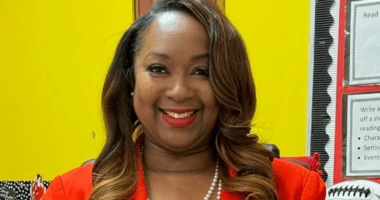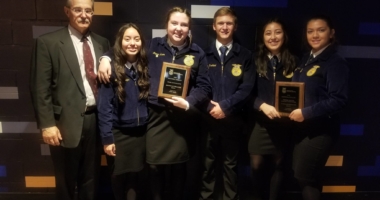Why I Teach Where I Teach: My Work Is As Diverse As My Students
Rebecca Friedman is a National Board Certified teacher at Thomas Jefferson High School, an International Baccalaureate and AVID school in Auburn, Washington. The student body at Thomas Jefferson is 23 percent Hispanic/Latino, 19 percent Asian, 9 percent African American, 2 percent Pacific Islander, and 40 percent Caucasian. About half of students qualify for free/reduced-price lunch, and there are more than 100 home languages spoken by families in the district. Rebecca teaches Spanish, Approaches to Learning for English-language Learners, and an AVID elective at Thomas Jefferson, where she has spent the last five of her 11 years as an educator. She writes the 15th installment in this series.
When I’m asked, “So, you’re a teacher; what do you teach?” I invariably reply, “Students.”
Here — in my once comfortably suburban, middle class, Western Washington school district, which now cushions the impacts of gentrification, faces the rise of the suburban poor, and welcomes ever-evolving immigrant communities — I’m allowed to be more than a Spanish and ELL teacher. I’m allowed to be a teacher of students.
When my school sought staff for a 15-hour credit retrieval course during school vacations, I was allowed to design curriculum for low-performing students to access ideas of epistemology, philosophy, decision-making, ethics, evolution, and interpretation of data. I told them: “You’re here because you’ve failed a course; I’m here because I know you can learn the hard stuff, and because you deserve more than just a work packet. We’re here to get us to graduation and beyond.”
I have also been privileged to be part of the team that re-established our heritage Spanish program, which led to increased relational and academic engagement from our Hispanic/Latino students, who are often dismissed as merely part of an underperforming and troublesome demographic. Many are earning college credit in their mother tongue before they even graduate.
I’ve spent planning periods as a judge for a spoken-word poetry class slam, seeing students who might not fare well in a traditional literature class weaving their linguistic visions in and out of metaphor, across languages, and in time to the music of their own souls.
I’ve spent three years as a teacher in our AVID program, with a cohort of students underrepresented amongst college graduates, supporting them to conquer advanced classes in the International Baccalaureate program.
I teach where I teach to be reminded that I have a choice: I could be a teacher who romanticizes the struggles of poverty, racial adversity, immigration, and countless other factors … or I could be a teacher who teaches students.
My choice is clear.
 This post is a part of an ongoing series, called “Why I Teach Where I Teach,” which asks educators in high-need schools to share what has attracted (and kept) them in the challenging environments they’re in. They share important stories and experiences that should remind us all of the power of strong school leadership, a network of supportive colleagues, and the genuine opportunity to have a say in schoolwide decisions. Listen up! They’re teaching us.
This post is a part of an ongoing series, called “Why I Teach Where I Teach,” which asks educators in high-need schools to share what has attracted (and kept) them in the challenging environments they’re in. They share important stories and experiences that should remind us all of the power of strong school leadership, a network of supportive colleagues, and the genuine opportunity to have a say in schoolwide decisions. Listen up! They’re teaching us.












